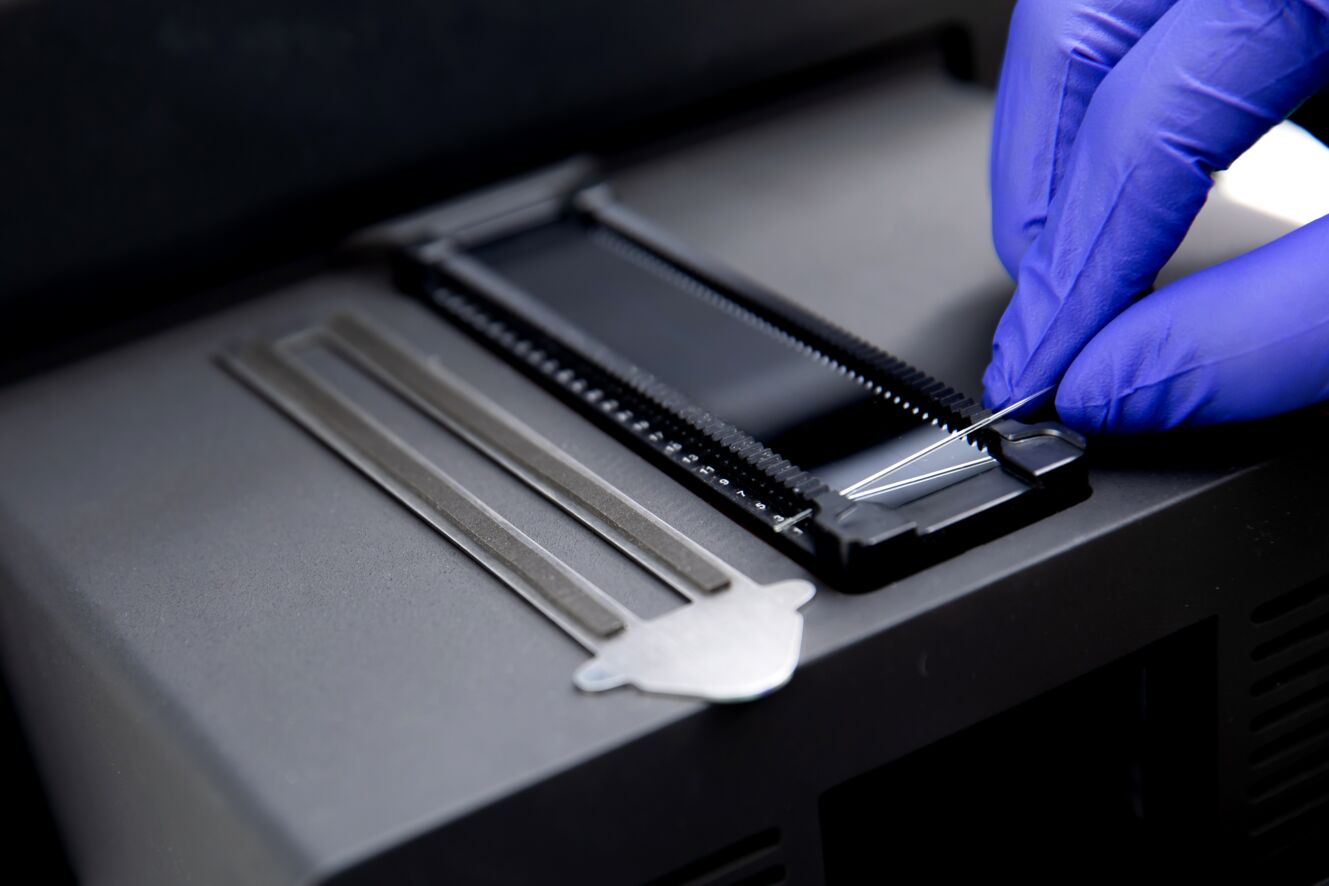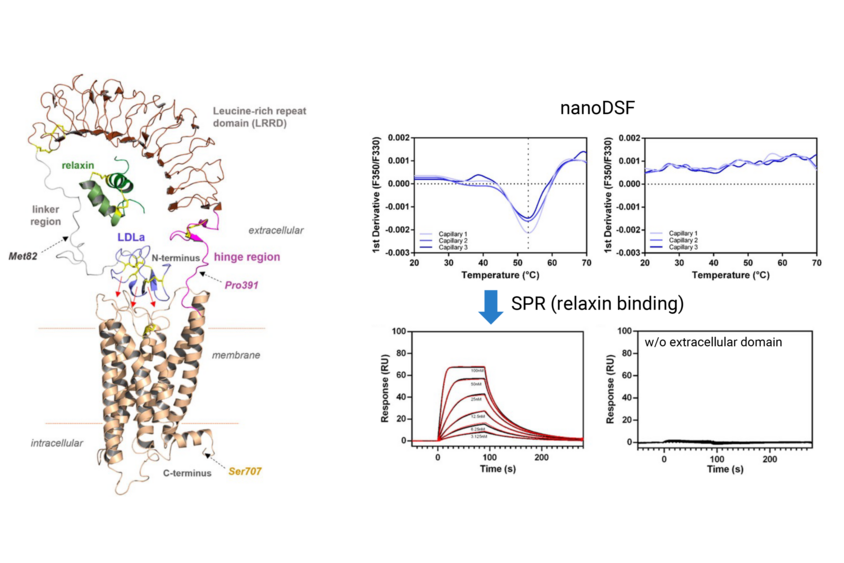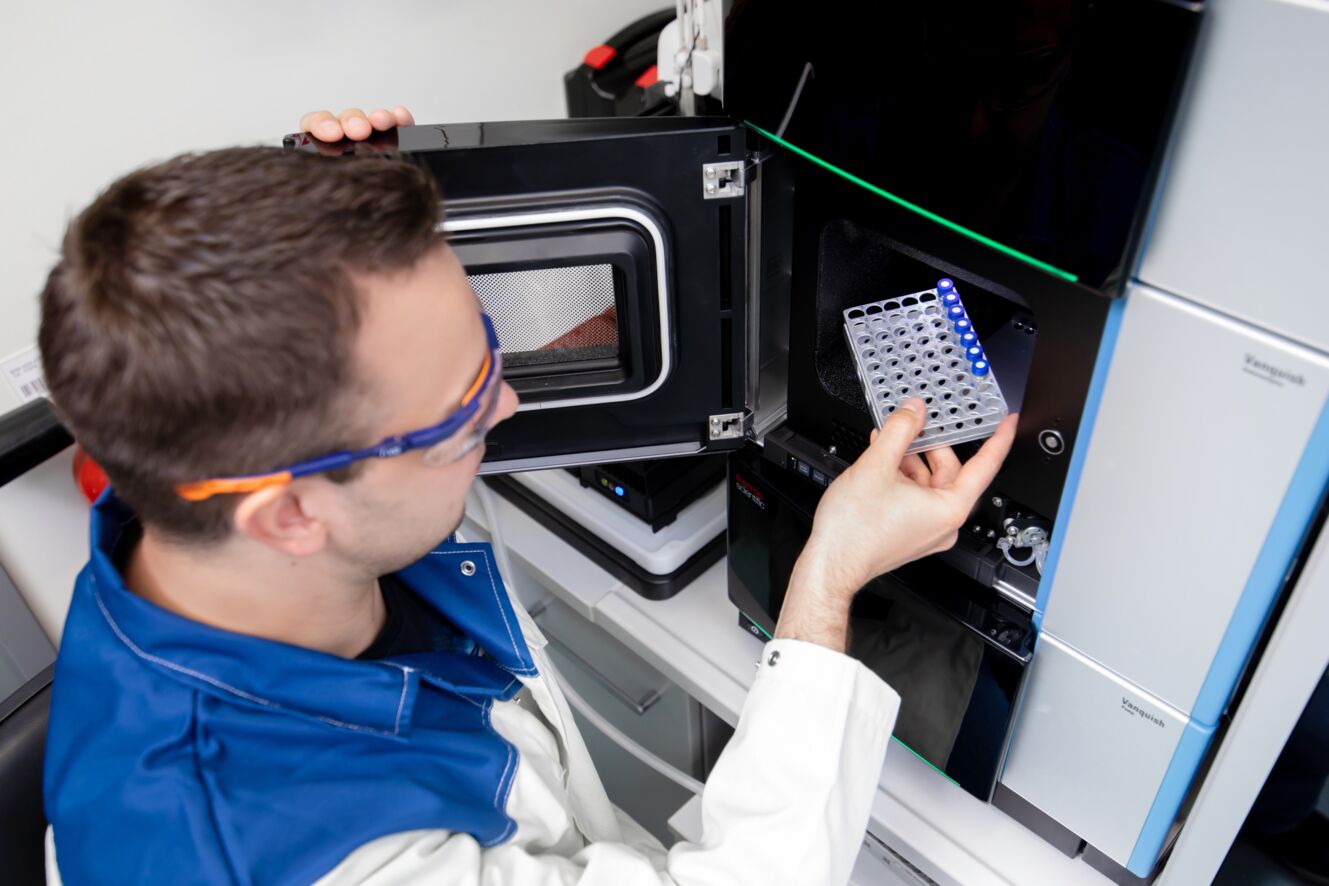
NUVISAN has expertise in purifying and characterizing challenging membrane proteins, such as ion channels, transporters, and GPCRs. As part of our membrane protein platform, we have established a highly efficient multistep production pipeline. In close collaboration with you, we design constructs and clone the genes into our versatile in-house vector panel. To succeed in the expression campaign, NUVISAN can rely on various expression systems, such as the baculovirus insect cell system and mammalian expression using Expi293TM cells.
We perform high-throughput small-scale expressions and purification under target-tailored expression and solubilization conditions. The outcome of small-scale expressions is evaluated by fluorescence size-exclusion chromatography (F-SEC) and nanoDSF. The results from the small-scale process are further optimized and translated to large-scale purifications. We offer iterative and final quality controls (SDS-PAGE, analytical and fluorescence-detected SEC, nanoDSF, and mass spectrometry) to guarantee the production of highly pure, functional, and monodisperse membrane proteins.

Membrane proteins exist in a variety of conformational states that are prone to binding of different ligand types (e.g., antagonist, inverse agonist, or agonist). The equilibrium of these states has been shown to be impacted by detergents. Thus, to provide a more native environment, the purified targets can also be integrated into nanoparticles, such as nanodiscs, amphipoles, or liposomes. We have extensive experience in producing membrane proteins suitable for biophysics (e.g., CPM assay, SPR, and nanoDSF), screening, biochemical assays, nanobody generation, and structural biology purposes.

Purification of the leucine-rich repeat domain GPCR (LGR7). Measuring melting curves by nanoDSF of different peak fractions during the purification process helps to identify correctly folded species for subsequent biophysical SPR studies that confirmed the importance of the extracellular domain for relaxin ligand binding.



